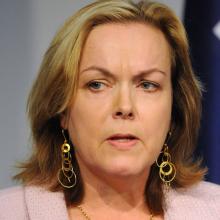
The Electricity Authority is ditching the cost-benefit analysis at the heart of its controversial attempt to find a new way to divide up costs for the national grid after finding an expanding range of serious computational errors in the work by Australian consultancy Oakley Greenwood.
The regulator says it will seek to recover most of the costs of the work, which has been in use since May last year, and is keeping its options to launch legal action against Oakley Greenwood.
The move, announced this morning, is a further spoke in the wheel of an issue that has proven impossible to resolve despite being on the electricity industry's agenda since the mid-1990s.
However, the decision removes a political hot potato from election year as final decisions on a new transmission pricing methodology (TPM) will now be delayed until the first half of next year.
Final decisions had been due ahead of the September 23 election.
Implementation of new guidelines is still on track for April 2020, the EA said in a statement, affirming its determination to continue with the project, which has sparked high profile political opposition and lobbying, and is the subject of growing electricity sector frustration over the length of time and amount of resources the issue is consuming.
However, the regulator is determined to continue with the TPM project.
"The current methodology encourages transmission customers to make wasteful investments merely to shift costs onto others," said EA chief executive Carl Hansen. "This activity results in higher prices for consumers who are unable to adjust their electricity demand, and technology developments are likely to magnify these problems in the near future."
The current proposals are hotly opposed by the Auckland business lobby, the Employers and Manufacturers Association, because the proposals would shift the cost of the national grid from the deep south of the South Island to the northern part of the North Island.
The proposals would also have raised electricity prices on the west coast of the South Island and had attracted the attention of the New Zealand First party leader, Winston Peters, who has been campaigning against the changes in part because of their impact on his electorate of Northland.
National grid operator Transpower had also been sufficiently concerned about the complexity of the proposed model that it wrote to the new Energy Minister, Judith Collins, earlier this year to warn her, prompting Ms Collins to take the unusual step of writing to the statutorily independent regulator to express her concerns. Ms Collins is unable to intervene directly, although did make two new appointments to the EA's board last week.
Numerous submissions from electricity industry participants on the EA's 2017 work programme have also suggested the issue is taking too long and consuming a disproportionate amount of analytical resource at a time when both the EA and the sector's other regulator, the Commerce Commission, have a number of other complex reviews under way.
Mr Hansen would not comment on the cost of the Oakley Greenwood work because the EA was likely to seek bids for a replacement, but said it represented well under 0.5% of the authority's annual budget of $70 million, suggesting the CBA has cost somewhat less than $400,000.
Asked whether the decision would have an impact on the EA's credibility, Mr Hansen said: "Our credibility is about being up-front and open with people. We thought we were entitled to rely on a specialist expert firm. We kept asking them for assurances (after initial mistakes were discovered).
"We are very disappointed. It's frustrating, but we are committed to being open and to a robust decision-making process. We are dealing with this curve ball."
The EA had considered whether Oakley Greenwood could be tasked with fixing the errors that the EA had found, but the regulator's board decided it would be just as quick to have the work completely replaced, Mr Hansen said.
The TPM's purpose is to more fairly apportion the costs of the national electricity grid to those parts of the country which most benefit from it, and to encourage the most efficient investment in both the grid and emerging new technologies such as large-scale batteries.
- By Pattrick Smellie from BusinessDesk












